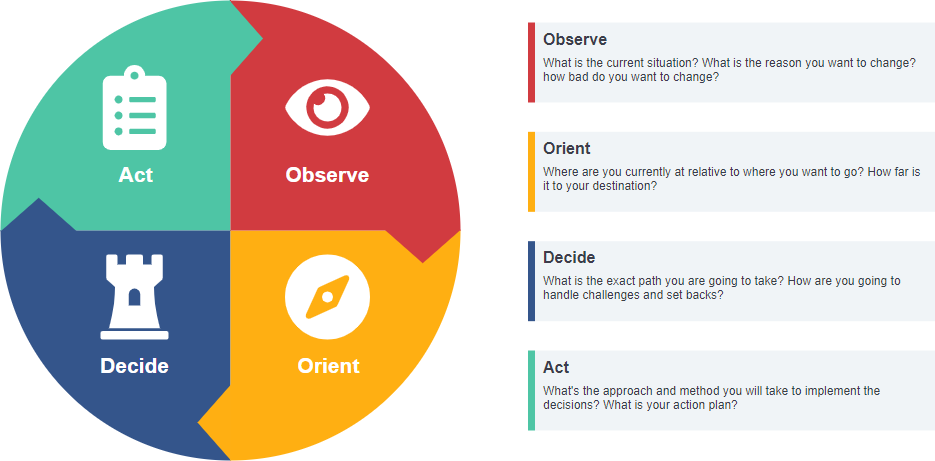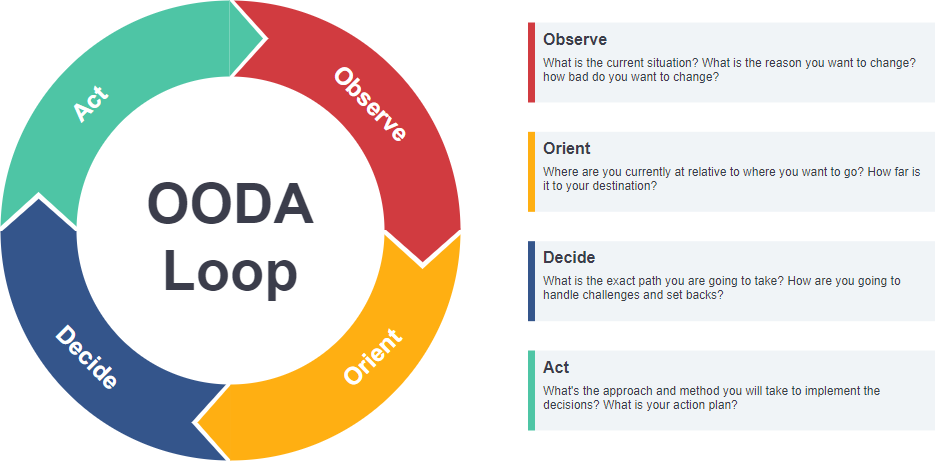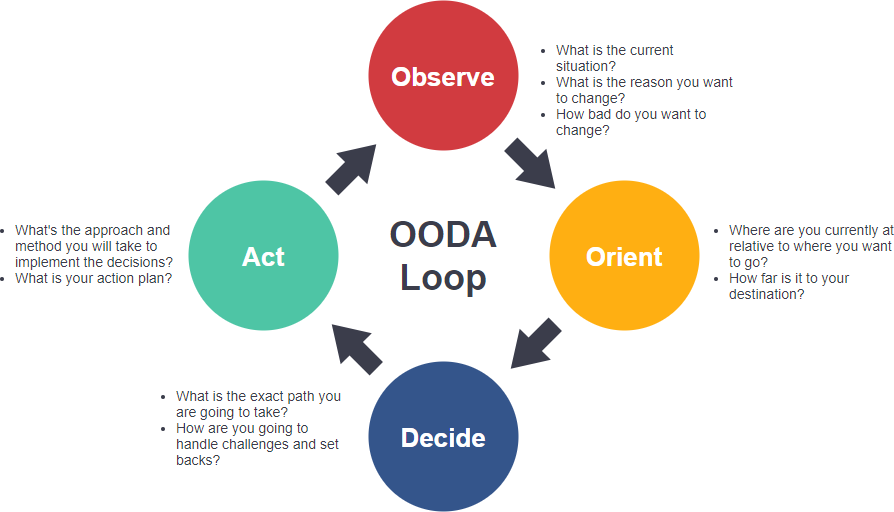The OODA loop (an acronym that stands for Observe, Orient, Decide, Act) is a four-step approach developed by military strategist John Boyd.
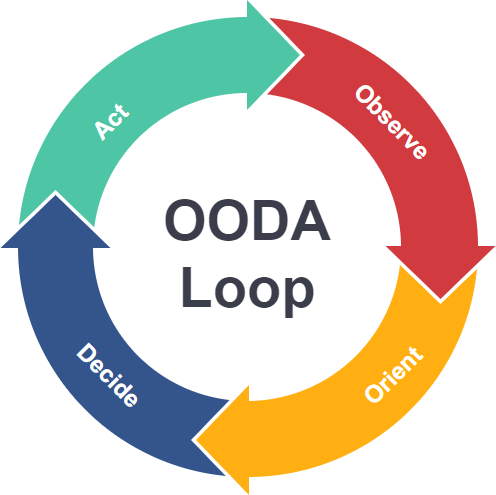
Who Use OODA Loop?
This looping concept referred to the ability possessed by fighter pilots that allowed them to succeed in combat. It is now used by the U.S. Marines and other organizations. Nation-states around the world use the OODA Loop as part of their military strategy. It has also been adopted by businesses to help them thrive in a volatile and highly competitive economy. It is particularly useful in scenarios where competition is involved and where the ability to react to changing circumstances faster than an opponent leads to an advantage.
OODA Loop
As the saying goes, “Business is war”, OODA loop theory proposed also applies to the practical application of war planning.
Enterprises can use the OODA “Observation-Positioning-Decision-Action” cycle as a theoretical model to develop business planning management processes. Through effective process management, they can develop business strategies and innovative business models at a faster rate than competitors, and gain competition. Advantage. Boyd provides a diagram for describing the OODA loop as shown in the figure below:
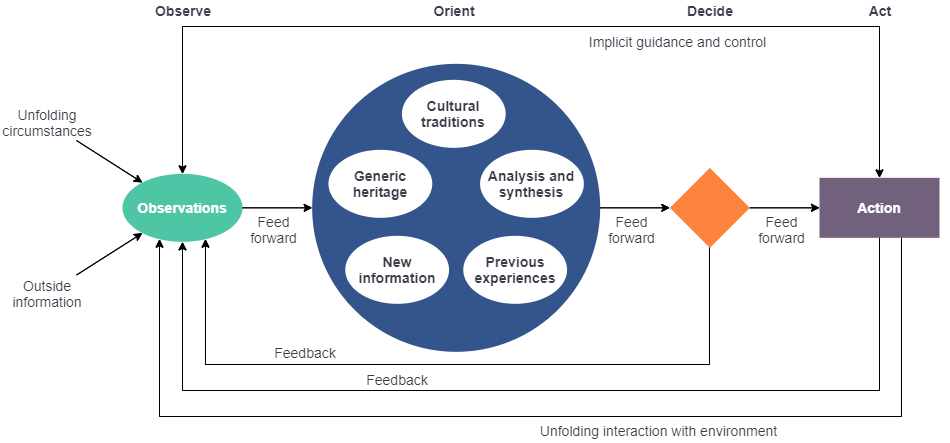
- The first step is “observation”: through the observation of the external environmental trends of the enterprise, industry, consumers, competitors, collect external intelligence and conduct intelligence analysis.
- The second step is “orientation”: situation analysis and judgment based on the observed and collected external information, and then put forward a feasible business idea as a hypothesis.
- The third step is “decision”: based on the research and assumptions made during the positioning phase, formulate the planning policy and goals, and determine important strategies and tactics.
- The fourth step is “action”: implement corporate decisions into action plans, and carry out activities such as execution and monitoring according to the execution plan. Since the environment is changing at any time, during the implementation phase, the results of monitoring and observation must be fed back to the “observation” phase, and the OODA planning cycle must be restarted.
OODA Loop Templates
